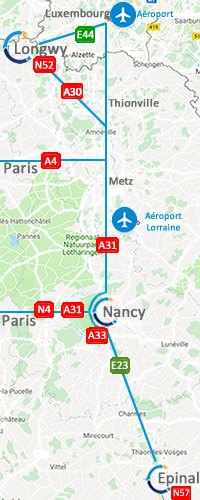
In oncology, a first project concerns the identification of strategic molecular targets. In response to the therapeutic resistance of metastatic breast cancer, this project aims to improve management by predicting therapeutic escape through the characterization of the molecular mechanisms that regulate the activity of biomarkers such as claudine 1, DDB2 and ERa36 and their coding gene.
The second project concerns the field of theranostics in biophotonics, in which we hope that the laboratory will become a major and clearly identifiable actor at the national and international levels. Biophotonics is the application of optics to biology in basic research, diagnosis and biomedical intervention. It is a multidisciplinary field that covers photonics, multi-scale biology and engineering (instrumentation, signal and image processing, systems). This cutting-edge field, which includes all optical analysis techniques for biological processes, has seen very strong growth in recent years, supported by a series of technological advances in the field of lasers, fluorescent marking of biomolecules, nanomedicines and dedicated instrumentation;
In a unique project, we are bringing together the therapeutic strategies we are developing in nanomedicine and our approaches in photodiagnostics through clinical spectroimaging methods (optical biopsy & multimodality panoramic imaging) around radiation-tissue interactions. The objectives are to obtain a label from the League against Cancer and to increase our international visibility.
In neuroscience, work on the study of the brain mechanisms of visual recognition in humans through the identification and localization of cognitive networks will be strengthened. These studies will benefit from the simultaneous recording of surface EEG - depth EEG (SEEG), with the ability to simultaneously record the neurophysiological activity of the unit neuron (in collaboration with Center for Systems Neurosciences - Leicester) which is a specificity of CRAN. The rapid periodic stimulation approach, which focuses on visual function, is key to intelligibly linking signals recorded at different levels of brain organization and in different modalities. We wish to make progress on multi-scale numerical and biophysical modelling by establishing relationships between the cellular scale and the scale of neuron populations. Essential local resources in signal/image processing and modelling, within CRAN but more broadly in the Charles Hermite Federation, will contribute to this success. This multidisciplinary research theme opens up opportunities for collaboration in many fields (neuropsychiatry, neurodegenerative diseases, etc.).
These projects in oncology and neuroscience benefit from a methodological research activity in signal and image processing (source separation, image restoration, etc.) with applications in optical spectroscopy, spectroimaging and microscopy. The main themes are the parsimonious regularization of inverse problems and multidimensional problems, namely hyperspectral image processing and tensor approaches.
- Molecular targets in a translational approach
- Interactions between radiation and biological tissue
- Neurosciences of systems and cognition
- Multidimensional signals








